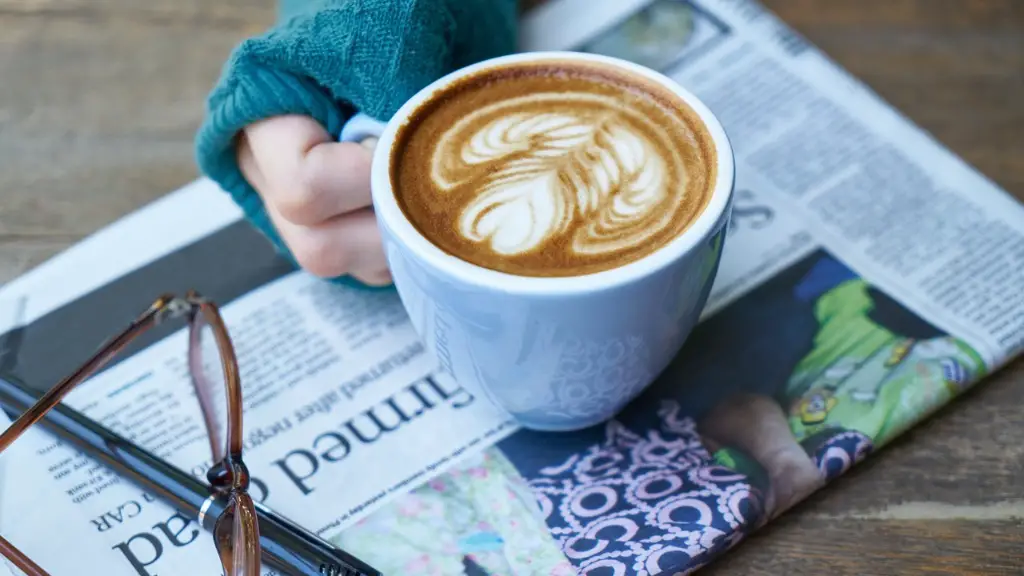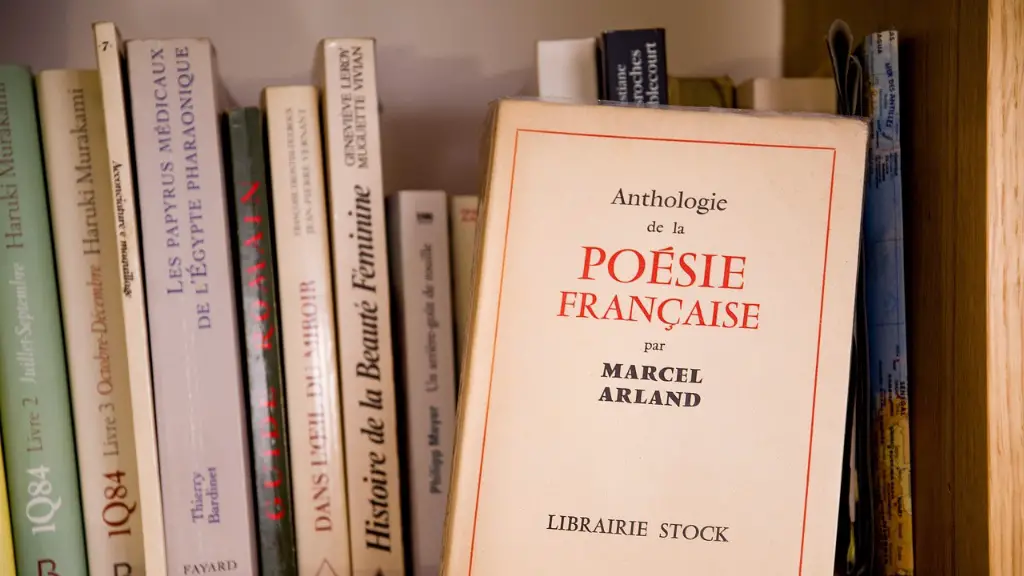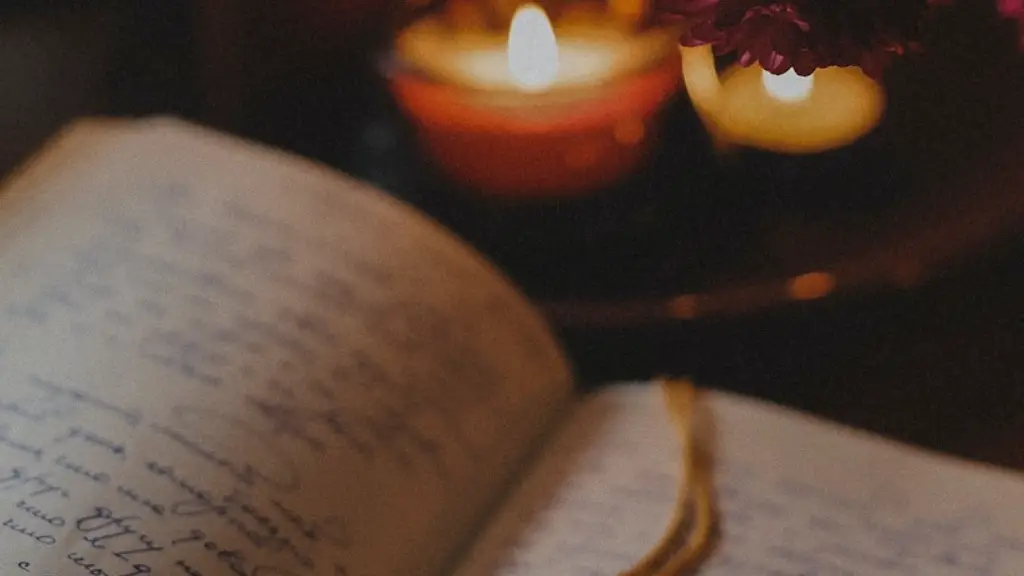Formats for Writing Poetry on Pictures
Writing poetry on pictures is a great way to generate creative, imaginative work. By combining a picture and a poem, a much more expressive piece of art is created. Many people may feel overwhelmed with how to get started with this form of writing, but with a few creative ideas, anyone can become a master at writing poetry on pictures.
First, it is important to choose the right picture. When selecting the image, make sure you pick one that is either quite simple or that evokes strong emotion for you. If the picture is too busy or intricate, it can be too difficult to focus on the poem. For example, a picture of a beach sunset may be an easier subject to write about than a picture of a crowded town.
Next, think about the poem. Begin by writing short free-form ideas about what the picture makes you feel or imagine. Allowing yourself to let your creativity take over, can help you uncover a poem to go with the picture. The poem should not just be a description of the image; your words should create an even stronger meaning to the picture.
Along with the poem, try to think of a title that somehow ties the language or objects of the poem together. Titles can be difficult – but remember, brevity is key. Aim to make it as simple and succinct as possible while still conveying the main ideas. To add further meaning, choose a title based on a phrase in the poem or a main feeling or theme that can be found in the picture.
Once you have a poem and a title, consider the format for the poem. There are many ways to arrange the poem and the picture. One approach is to superimpose the poem over the image. Another idea is to have the poem written to the side of the picture. Be mindful of the font you choose – it should be easily readable and appropriate. Also, use short lines which will draw more attention to the poem.
The Poem and Image Interaction
When writing poetry on pictures, it is important to keep in mind the relationship between the poem and the image. The poem should work in tandem with the image to create an emotionally-charged artwork. Analyze how the poem works both independently and as part of the bigger picture, and if necessary, make adjustments to ensure the two elements fit together harmoniously.
For maximum impact, the words and pictures should call the readers’ attention in a different and unique way. The poem should exemplify the feelings and emotion of the image in a way that it can stand alone. Additionally, the poem should explore themes that are suggested by the picture, creating a captivating and compelling piece of artwork.
Techniques for Bringing Poems and Pictures Together
Combining poems and pictures is an art. Here are a few techniques for bringing them together effectively:
1. Use colors to highlight the relationship between image and poem: Colors have tremendous power to convey emotions and draw attention. For instance, writing a poem in shades of blue can echo the colors in a sea image and bring the poem and image into harmony.
2. Engage the other four senses: Most people associate poetry with words, but think beyond as well. Use narration, drums and music to bring the poem and image to life.
3. Utilize metaphors and metamorphic themes: Metaphors and metamorphic themes can be used to draw out connections between the poem and the picture. For example, using a butterfly image and the phrase “transformation” in your poem could create a powerful image and meaning.
Guidelines for Polishing Off Your Writings
Once you have the poem and the image, there are some steps you can take to ensure your work is tidied up and ready to present:
1. Read the poem out loud: Reading the poem out loud is important because it can help you notice any mistakes you have made with your words and give you insight on how to better the poem.
2. Ask for feedback: Before you publish the poem and the picture, ask for feedback from fellow poets, family and friends. This can offer much helpful insight and criticism to make your work better.
3. Place the poem and the picture together to check for cohesion: Rather than just looking at the poem and the picture separately, make sure you place them together to check for cohesion. This can help with making sure the variations of the composition look balanced and polished.
Listening to the Picture
When writing poetry on pictures, it is important to really listen to the picture. This means taking the time to look intently at the picture and consider the emotions, elements, themes and messages it conveys. It is vital to pay attention to the little details such as facial expressions, the weather in the picture and reflections that can be found in the image. Looking into the details can provide insight for creating a unique poem with the image.
In addition to listening to the image, it is also important to take the time to draw inspiration from outside sources. Doing research can provide knowledge on how to craft a powerful poem. Moreover, reading books and poetry collections can help to spark creative ideas and connect with the image.
Going Above and Beyond
For an effortless way to elevate the poem and picture, consider including a quote or other special element. Collating several quotes that relate to the poem’s themes can create a memorable piece. For example, adding an inspiring quote that echoes the theme of the poem and the image can introduce another layer to the artwork.
Additional elements such as motion graphics and videos can also be used to show the poem and image more effectively. Integrating videos and sounds into the image can make the picture come alive and reinforce the message of the poem.
Incorporating Art Forms into Poetry
Incorporating other art forms is another way to make writing poetry on pictures more engaging and versatile. Including music, animations and illustrations makes the image and poem much more dynamic. For example, taking the classic painting of Starry Night, written by Van Gogh, could provide endless opportunities for creativity: writing a poem about the stars, experimenting with calligraphy or adjusting the colors can all make the piece extraordinary.
Adding other art forms to the poem and the picture is a great way to bring your work to life and make it stand out among typical artwork.
Breaking Tradition with Poetry
Writing poetry on pictures is also an excellent way to explore and push the boundaries of what constitutes a poem. Rather than simply writing poetic lines, experimenting could lead to adding unusual elements. For example, changing the orientation of the poem or adding emojis to indicate the tone of the poem can be innovative and daring.
Incorporating special features can create an aesthetically pleasing piece by breaking the limits of traditional artwork. Working with the picture to produce an experimental work is sure to result in delight.
Exploring Different Perspectives
When writing poetry on pictures, it is important to consider different perspectives. Think about the possible meanings that your poem and image could convey to different people and consider how to make the work accessible to a range of viewers. Try to keep the poem and image open to interpretation and find ways to let viewers use their own imaginations.
Creating a poem that allows for different interpretations can bring a lot of impact and value to the artwork. It is worth taking the time to consider how different viewers might interpret and understand the poetry and the image.
Encouraging Discussion and Relevance
Writing poetry on pictures can also be used for social commentaries and meaningful conversations. Analyze what is depicted in the image and consider possible messages that could come from the combination of the poem and the picture. This can motivate viewers to start meaningful conversations and learn something new.
It is also a good idea to consider the relevance of the image and poem. Keeping the poem and image current, can help to reach a wider audience and to spread awareness. Exploring controversial topics is a great way to bring attention to a specific issue or an event.
Conclusion
Writing poetry on pictures is a great way to combine creative words and an eye-catching image in an expressive piece of art. With the right image and poem, viewers can be inspired and enthralled by your masterpiece. By using colors and other art forms, using emotive words, listening to the picture and considering different perspectives, your artwork can stand out. Crafting a poem becomes effortless when taking the steps to begin, interact with the poem and the image, and apply the tips that make it shine.


